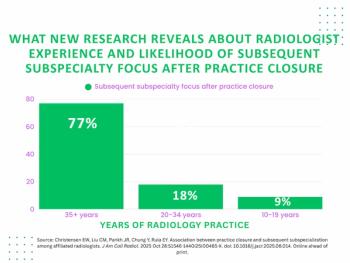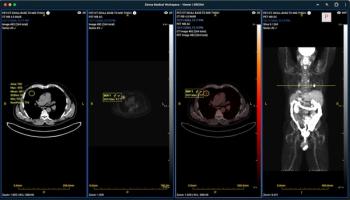
Protecting your radiology contract: How did we get here anyway?
In a previous radiology lifetime (not so long ago), geography was the friend of the radiology group with an exclusive hospital professional services agreement. Life was tidier then, with turf carved out in a relatively collegial fashion among radiology practices who maintained a gentleman’s agreement not to compete across certain lines. Geographic distribution and a “moat” of agreed-upon boundaries provided a level of strength so groups could also exhibit an adversarial stance when dealing with hospital administration. And they frequently did. They also tolerated bad behavior among members of the group and, in some cases, seemed to view their contracts as entitlements.
This article is the first in a series to review why and how radiology practices set themselves up to lose their long-held professional services agreements, how hospitals view “quality” from a business perspective, and what steps groups can take to turn an adversarial relationship to a collaborative partnership. Included is a challenge to change how we conduct business, with the goal of long-term success for everyone involved.
In a previous radiology lifetime (not so long ago), geography was the friend of the radiology group with an exclusive hospital professional services agreement. Life was tidier then, with turf carved out in a relatively collegial fashion among radiology practices who maintained a gentleman’s agreement not to compete across certain lines. Geographic distribution and a “moat” of agreed-upon boundaries provided a level of strength so groups could also exhibit an adversarial stance when dealing with hospital administration. And they frequently did. They also tolerated bad behavior among members of the group and, in some cases, seemed to view their contracts as entitlements.
“What are they going to do? Replace the entire group?” It was a legitimate challenge then. Now the answer is, “Yes.” Hospitals have terminated-and will continue to terminate-contracts with their radiologists. The victims have included radiology practices with long-standing contracts of 20 or 30 years, large and well-respected practices with recognized clout, and groups everyone felt were invincible in terms of market power. Where did we go wrong?
A painfully obvious answer is that, in many cases, we introduced hospital administrators to our replacements through teleradiology call coverage. Call is a difficult sell during the recruitment process and as more groups outsourced coverage, it gave the advantage to the recruit as he or she played groups off each other with quality of life issues. As an industry, we caved. And we brought in companies that make their livings by providing outstanding service with responsive report turnaround for the emergency department, physician access to images and reports, and a “yes, sir” attitude toward hospital administrators, who often picked up the tab for call coverage as their radiology practices negotiated for subsidies.
Then we add the fact that radiologists in freestanding outpatient imaging centers had become a chief hospital competitor-and it paid off for many groups. Good times, while they lasted! Both hospitals and freestanding imaging centers have felt the impact as former key referral sources instead opened their own imaging facilities and everyone looked for a way to recapture market share.
Another key factor involved the visibility of the radiologists-or lack of visibility, to be more accurate. As PACS evolved and the pressure to read more cases mounted, referring physicians became used to pulling up cases on a viewing station and less used to dropping by the department for a consult. The radiologists moved from being familiar faces to names on a report. And now there were just a few more names to learn as the “nighthawk” guys were signed on.
We were part of a perfect storm. Hospitals and radiology practices shared the downward pressure on reimbursement, the demand to do more with less, and an eroding referral base. And in walked an answer, from the hospital’s perspective: an independent business that talked a good game (and delivered) in terms of service, that dealt with problem physicians promptly and decisively, and that delivered “quality” as defined by hospital service expectations. Sure the medical staff complained and wanted their trusty radiologists-for a while. They would adjust. They did adjust. And life for the hospital-based radiology practice changed-maybe forever.
Next: What does “quality” mean in a hospital setting and why are we missing the boat?
Ms. Kroken is a consultant and principal in
Newsletter
Stay at the forefront of radiology with the Diagnostic Imaging newsletter, delivering the latest news, clinical insights, and imaging advancements for today’s radiologists.






























